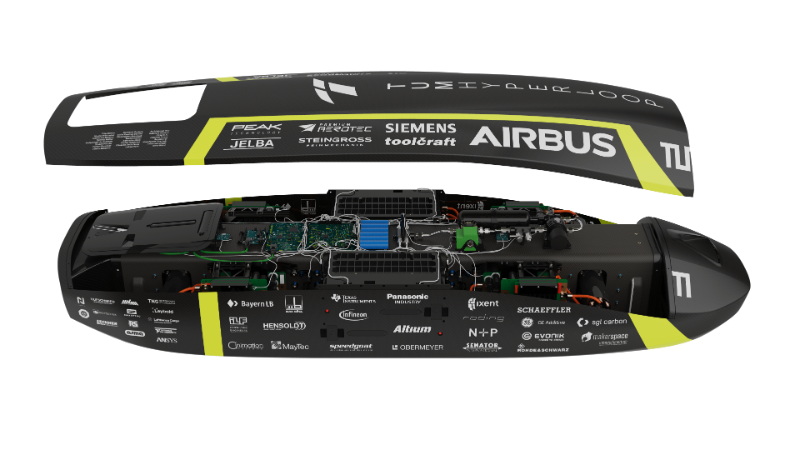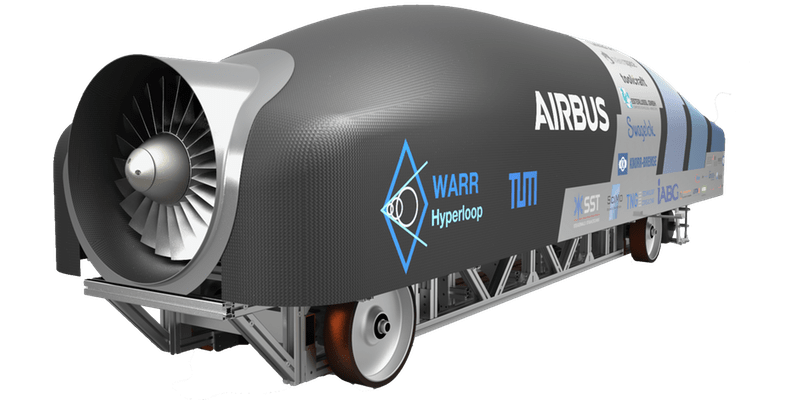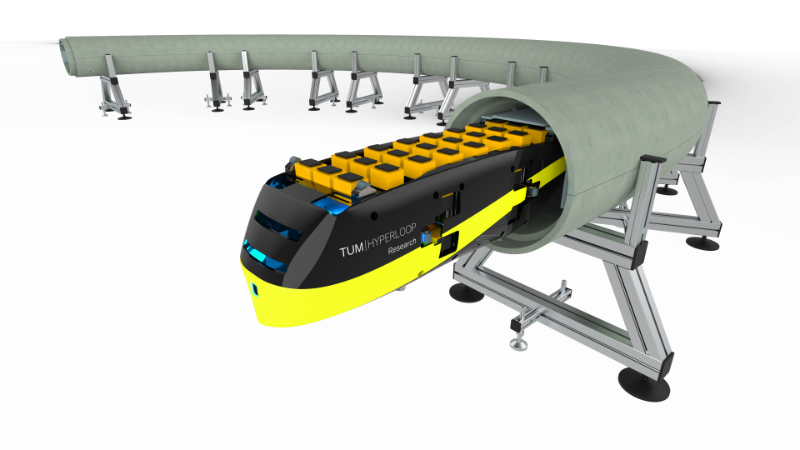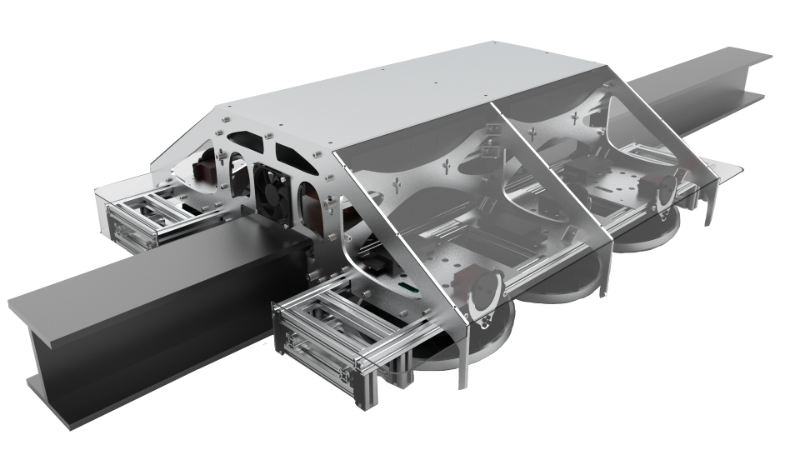Rollout coming soon... stay tuned!
- Hyperloop
- Demonstrator
Dive into THE Components
- Competitions
- Press & Media
- Hyperloop
- Demonstrator
Dive into THE Components
- Competitions
- Press & Media
By optimizing every subsystem and pushing every component of the pod to its limits, the team was able to take the performance to impressive new heights.
For the final SpaceX Hyperloop Pod Competition in July 2019 the team has pushed every aspect of the pod to its extremes.
New custom battery cells with impressive power-density, new improved power electronics for even higher power, a custom braking system with higher pressures and an all-titanium design as well as an even lighter although stronger reinforced carbon fiber chassis contributed to raising the performance of the pod to new levels. This resulted in a new speed record in the race: in the final run of the July 2019 competition the pod reached a peak speed of outstanding 482 km/h.

Building upon the design of the previous pod but making decisive changes in all subsystems, the team managed to increase the power-to-weight ratio by a factor of more than five.
Following the success at the second competition, the team was encouraged to double down on its high-speed design.
Switching to distributed propulsion with eight lightweight but high-power ironless motors, optimizing each layer of the carbon fiber chassis as well as designing a custom pneumatic braking system contributed to an incredible five-fold improvement of the power-to-weight ratio. At the competition in July 2018 this pod accelerated to remarkable 467 km/h, shattering the previous speed record and earning compliments from the SpaceX jury for the impressive improvements.


With a mass of only 85kg and the first onboard propulsion system, providing 0.9 g of acceleration, the radical new design of the second prototype from TUM influenced all future pods in the competition.
With only six months to design, build and test the prototype for the second competition, the team decided to work on a radically new concept, a lightweight and high-performance pod.
A powerful electric motor was added for propulsion, carbon fiber was used for the chassis and all components were designed with lightweight in mind. The result was the fastest vehicle in the race by far: after passing again all stages of the competition, the second pod from TUM reached an impressive speed of 324 km/h, setting a new record in the race.


The very first pod prototype from the Munich team, built with scalability in mind.
Its unique feature: a built-in compressor inspired by Elon Musk’s white paper to comply with the competition’s design criteria.
Shortly after the announcement of the competition in 2015, a group of students at TUM started working on a one-of-a-kind Hyperloop prototype.
With a scalable design, including a compressor at the front, a modular aluminium chassis and a redundant braking system, the team from Munich impressed the SpaceX jury, managing to pass all stages and qualify for a test run on the day of the competition in January 2017. With a flawless execution and a top speed of 94 km/h, Pod I delivered the first win for the Munich team at the event.

With the long-term goal of developing a full-scale transportation system in mind, we successfully prototyped key systems at a smaller size with this research project.
This research pod was designed and operated to test key systems, as a first step to gain knowledge and experience in advance of developing a full-scale prototype.
It features the first concrete vacuum tube, a new cheaper design choice in the Hyperloop development. Its electromagnetic levitation system guarantees an efficient operation and allows the pod to levitate for more than 20 minutes solely on battery power. By means of a self-developed linear motor the pod is propelled contactlessly and without moving parts. In addition, the track features curves, a challenging element not found in any other test facility.
We were honored to present our prototype both to Dr. Markus Söder, Prime Minister of Bavaria, as well as Elon Musk himself.

Motivated by the 2018 SpaceX levitation sub-competition, the team developed and built a prototype capable of lifting a payload of up to 50 kilos.
In parallel to the 2018 Hyperloop Pod Competition, SpaceX announced a sub-competition for levitating prototypes. The team quickly decided to rise to the challenge and take part in it as well.
The chosen design features a unique levitation system, which allows the pod to levitate even when it is not moving. To achieve this, six small electric motors quickly spin circular permanent magnet arrays above an aluminum track. By tilting these modules, the pod is able to move back and forth on the track.
The prototype was showcased during the competition in July 2018 and received an Innovation Award by the SpaceX jury.
